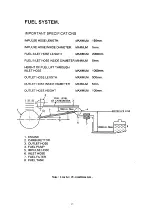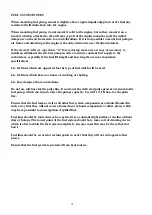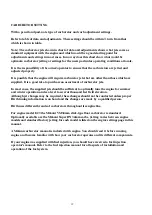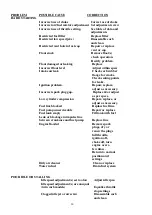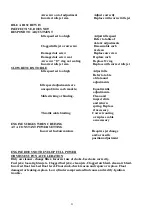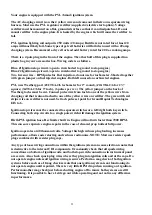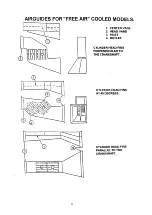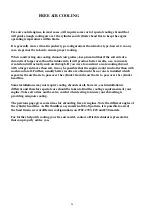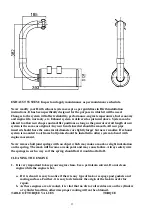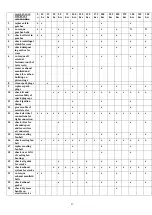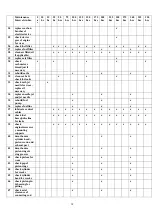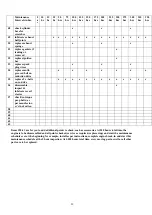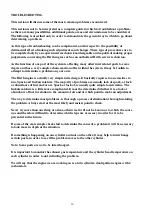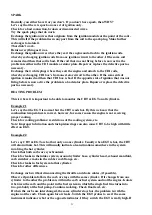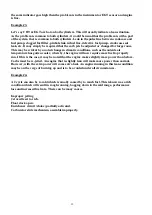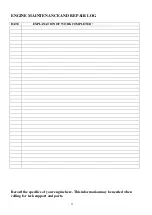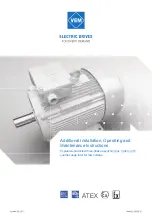
18
FUEL SYSTEM NOTES
When mounting fuel pump, mount it slightly above engine impulse nipple, in order that any
residual oil will drain back into the engine.
When mounting fuel pump, do not mount it solid to the engine, but rather, mount it on a
bracket which is attached to the airframe or part of the engine mount beyond the rubber
dampener on the airframe side, to avoid vibrations. If it is not possible to mount fuel pump to
air frame and attaching to the engine is the only alternative use vibration isolators.
If the aircraft will ever experience “G” forces during maneuvers, it may be necessary to
install an additional electric fuel pump in order to ensure constant fuel supply to the
carburetors, especially if the fuel lift height and hose lengths are near maximum
specifications.
Use fuel lines which are approved for the type of fuel which will be used.
Use fuel lines which have no chance of cracking or chafing.
Use hose clamps at hose connections.
Do not use soft hose for the pulse line. It can lower the delivered pulse pressure/vacuum to the
fuel pump, which can in turn lower the pumps capacity. Use stiff 14” ID hose for the pulse
line.
Ensure that the fuel tank as well as all other fuel system components are situated/located in
such a way that they will not cause a hazard near exhaust components or other places which
may have potential to cause ignition of spilled fuel.
Fuel lines should be routed in such a way that it is a constant slight incline or decline without
dips or humps. The lowest point of the fuel system should have some sort of draining device
which is able to drain the fuel system completely. In some cases this may be the carburetor
bowl.
Fuel lines should be secured at certain points in order that they will not rub against other
pieces.
Ensure that the fuel system is protected from heat sources.
Summary of Contents for F-23
Page 17: ...17 Note 1 inch 25 4 millimeters ...
Page 23: ...23 ...














